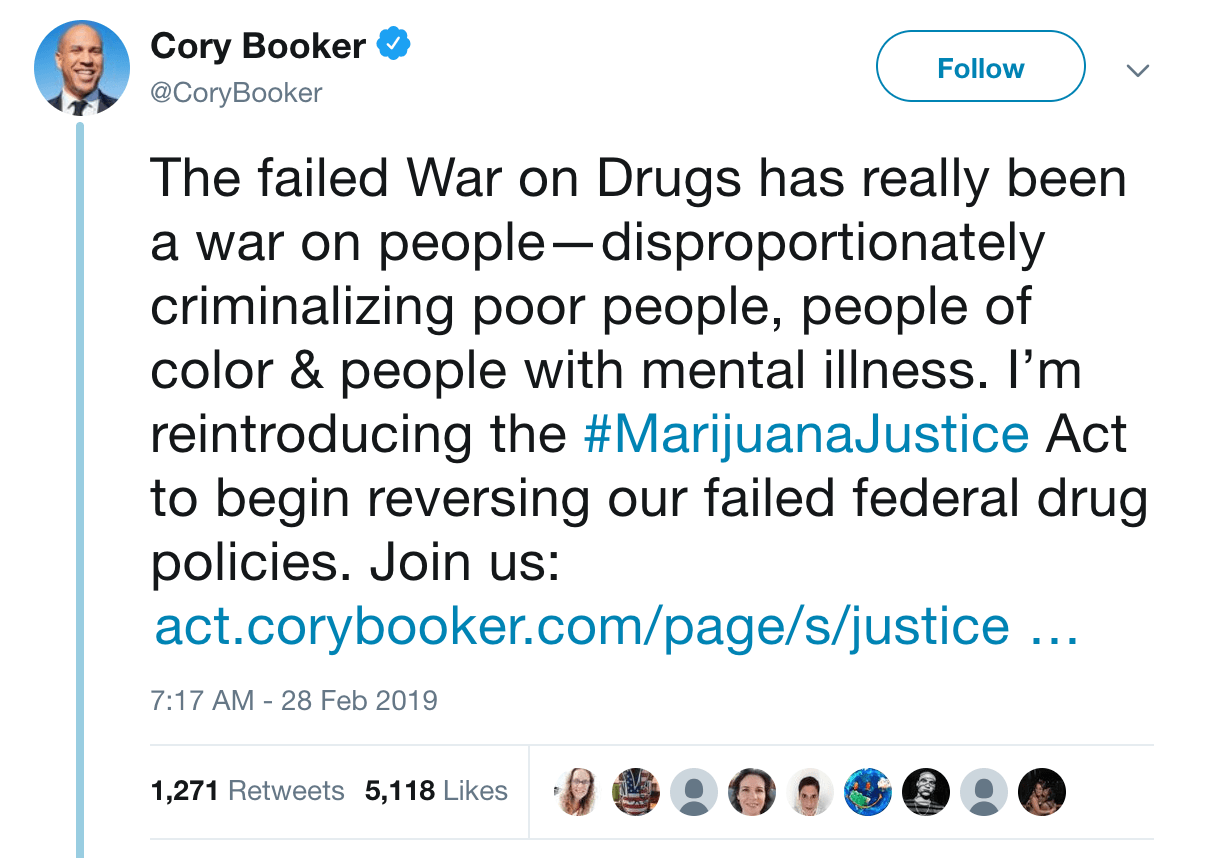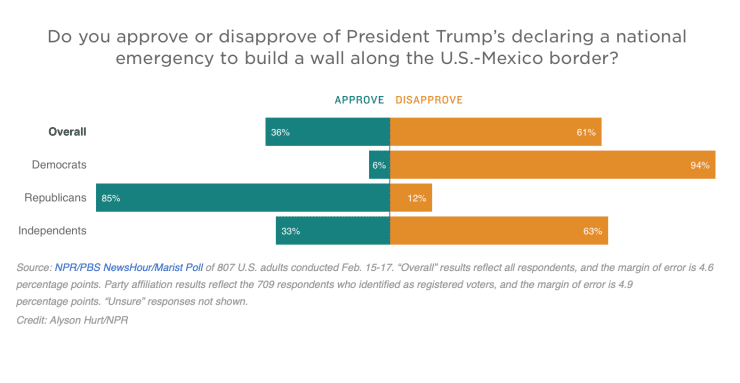The 2020 United States Presidential election is on Tuesday, November 3, 2020 (or 553 days from the publishing of this post) and already there are 21 Democrats who have formally begun their campaigns. Over the next several months, we will take a dive into who the candidates are and what they prioritize. In each candidacy post, we will work in order of when the announcement for president was made and briefly explore a few candidates at a time to make the information easier to digest.
Below is a chart of all current Democratic candidates and a link to their campaign site.
| Candidate | Title (current or former) | Official Start Date |
Campaign Site |
| John Delaney |
a former U.S. representative from Maryland | August 10, 2017 | https://www.johndelaney.com/ |
| Andrew Yang |
an entrepreneur and author from New York | November 6, 2017 | https://www.yang2020.com/ |
| Tulsi Gabbard |
a U.S. representative from Hawaii | January 11, 2019 | https://www.tulsi2020.com/ |
| Julián Castro |
a former U.S. secretary of housing and urban development and San Antonio mayor | January 12, 2019 | https://www.julianforthefuture.com/ |
| Kirsten Gillibrand |
a U.S. senator from New York | January 15, 2019 | https://kirstengillibrand.com/ |
| Kamala Harris |
a U.S. senator from California | January 21, 2019 | https://kamalaharris.org/ |
| Pete Buttigieg |
the mayor of South Bend, Indiana | January 23, 2019 | https://peteforamerica.com/ |
| Marianne Williamson | an author and lecturer | January 28, 2019 | https://www.marianne2020.com/ |
| Cory Booker |
a U.S. senator from New Jersey | February 1, 2019 | https://corybooker.com/ |
| Elizabeth Warren | U.S. senator from Massachusetts | February 9, 2019 | https://elizabethwarren.com/ |
| Amy Klobuchar |
a U.S. senator from Minnesota | February 10, 2019 | https://amyklobuchar.com/ |
| Bernie Sanders |
a U.S. senator from Vermont | February 19, 2019 | https://berniesanders.com/ |
| Jay Inslee | the governor of Washington | March 1, 2019 | https://www.jayinslee.com/ |
| John Hickenlooper |
a former governor of Colorado | March 4, 2019 | https://www.hickenlooper.com/ |
| Wayne Messam |
the mayor of Miramar, Florida | March 13, 2019 | https://wayneforusa.com/ |
| Beto O’Rourke |
former U.S. representative from Texas | March 14, 2019 | https://betoorourke.com/ |
| Mike Gravel |
a former U.S. senator from Alaska | April 2, 2019 | https://mikegravel.com/ |
| Tim Ryan | a U.S. representative from Ohio | April 4, 2019 | https://timryanforamerica.com/ |
| Eric Swalwell |
a U.S. representative from California | April 8, 2019 | https://ericswalwell.com/ |
| Seth Moulton |
a U.S. representative from Massachusetts | April 22, 2019 | https://sethmoulton.com/ |
| Joe Biden | a former vice president of the United States | April 25, 2019 | https://joebiden.com/ |
Within the Democratic Party, there are significant differences of opinion on key issues. At times, this is discussed as a contest between progressive Democrats and centrist Democrats.1 Some argue that there are more than two “camps,” dividing the party into three or four factions.2 Regardless of the labels or number of different camps, it is clear that this will be a hotly contested primary that will highlight divisions—and key commonalities—among the Democratic candidates. Already, proposals such as Medicare for All, a living wage, the Green New Deal, and free public college are becoming litmus tests for candidates to show where they stand.3 (NOTE: See our previous blog posts about the Green New Deal and tuition-free public college.) In the coming weeks, less well-known candidates will be struggling to win a place on the debate stage and to win that place securely. There are two ways to ensure a place in the Democratic party debates, and candidates want to meet both thresholds in order to show their strength. Candidates can secure debate spots by receiving at least one percent support in three approved polls or by securing at least 200 donors per state in at least 20 states. Several of the announced candidates are in danger of missing the first debate in late June.4
Discussion Questions
- How might the number and types of candidates from one political party impact the election overall? How might it impact the chances of that party winning the presidency?
- If you were in charge of the Democratic Party, would you make it more difficult for candidates to secure a position in the debate? Easier? What would you change, if anything?
- Looking at this list, do you notice anything interesting about the Democratic candidates who have announced their campaigns? Are there any noticeable trends?
- Are there any candidates from this list who immediately jump out at you because of something you know about them? Is what you know about them something having to do with their political views, something personal about them, or both? Does what you know about them make you more or less likely to support their candidacy for President? Why?
- Are there any candidates whom you have never heard of before or whom you know very little about their political views? What are some strategies you could use to learn more about those candidates? Why, if at all, is it important to learn more about those candidates?
- Of the candidates listed here, are there any that you initially think could have a good chance of defeating President Trump in the 2020 election? Why or why not?
Sources
Featured Image: New York Times “Who’s Running for President in 2020?” https://www.nytimes.com/interactive/2019/us/politics/2020-presidential-candidates.html
[1] Ed Kilgore. “What is a Centrist Democrat, Anyway?” New York Magazine. August 10, 2018. https://nymag.com/intelligencer/2018/08/centrists-progressives-and-other-democratic-labels.html
[2] Noah Redlich. “The Four Democratic Parties.” Harvard Politics. March 19, 2018. https://harvardpolitics.com/united-states/the-four-democratic-parties/
[3] Jennifer Earl. “Three Bernie Sanders Policies Now Embraced by the Democratic Field.” Fox News. April 11, 2019. https://www.foxnews.com/politics/bernie-sanders-policies-now-embraced-by-the-democratic-field AND Rashaan Ayesh. “Where the 2020 Presidential Candidates stand on the Green New Deal.” Axios. April 29, 2019. https://www.axios.com/2020-presidential-candidates-green-new-deal-22faff60-3fee-45f3-8636-09e437c82431.html
[4] Maggie Astor, Denise Lu & Matt Stevens. “Who’s in the Democratic Debates, and Who’s in Danger of Missing Them.” The New York Times. April 29, 2019. https://www.nytimes.com/interactive/2019/04/29/us/politics/democratic-primary-debates-2020.html?mtrref=www.google.com









